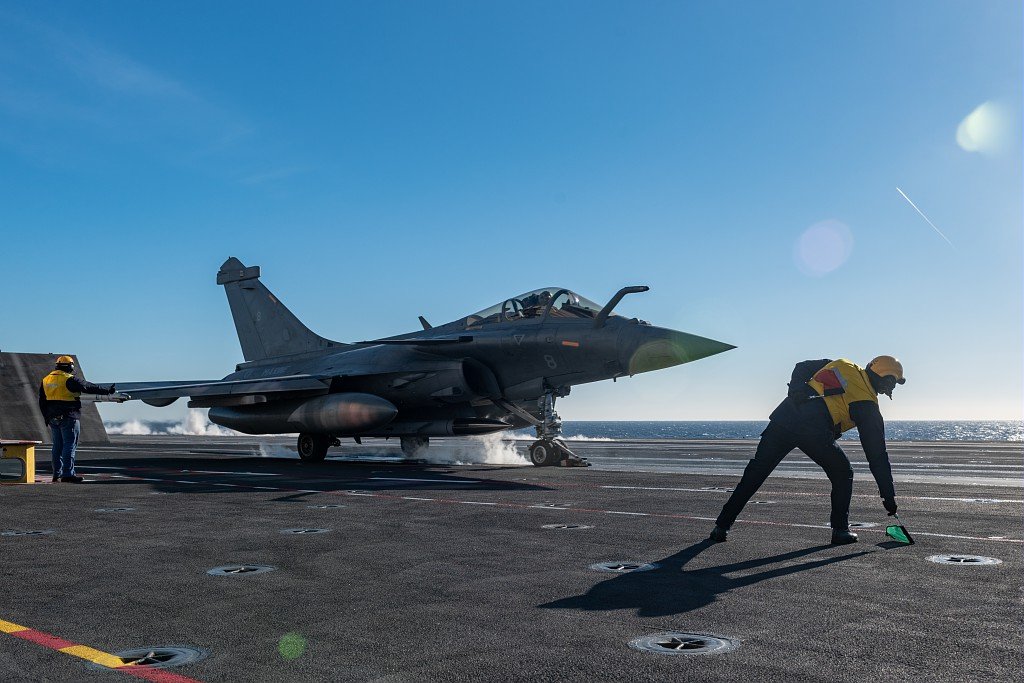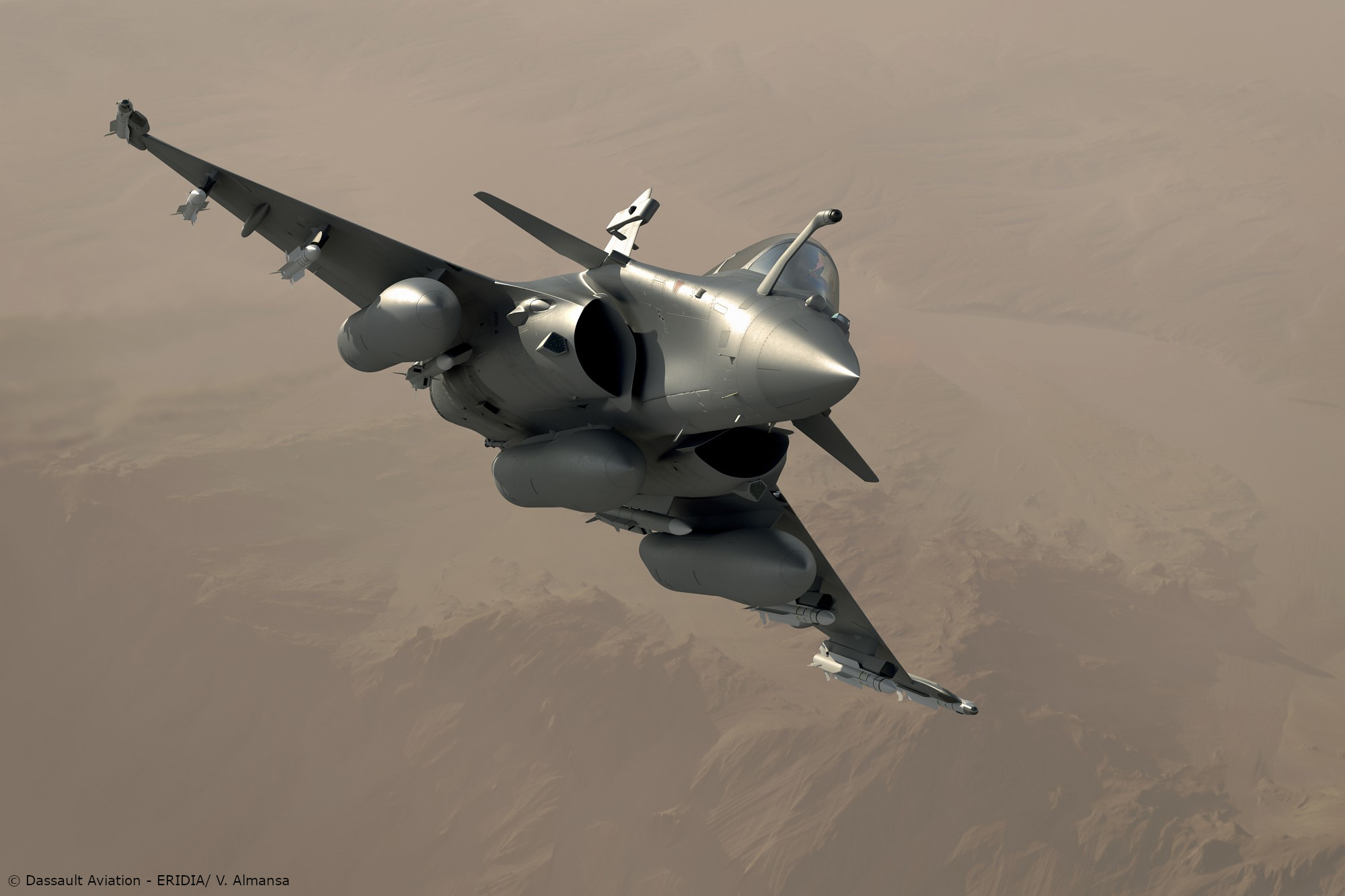A Rafale-M fighter jet of the French navy was forced to make an emergency landing in Malta after it experienced issues with refueling mid-air, according to local media reports.
India Eyes ‘Debut Contract’ For LCA Tejas Fighter Jets With Malaysia After BrahMos Success With The Philippines
It is said that the Rafale-m or Marine, which is currently stationed on the French aircraft carrier Charles de Gaulle, was rerouted to Malta on February 6 evening after the nozzle of the refueling probe came off and the fighter jet could not acquire enough fuel to return to the ship.
A spokesperson of Malta International Airport also confirmed to The Malta Independent that a French Dassault Rafale military plane landed there at 19.30 on Sunday as it did not have sufficient fuel to complete its journey.
The jet landed on Apron 2 while French specialists were rushed in by a helicopter for a short refuel and repair of the issue. Later that night, a French Navy NHI NH-90 NFH ‘Caiman’ was apparently deployed from the same aircraft carrier with the part and a technical crew to fix the jet; shortly after midnight, both aircraft headed east towards the ship. The plane then took off from Malta at 00:16 that night, according to the spokesperson.
Seems like a ?? fighter jet had to make an emergency stop in #Malta today. All is well though and the Rafale returned safely to @French_CSG. The last such emergency landing was in 2011, but Rafales had made it to Malta for the 2021 Air Show too. Glad no pilots were injured. https://t.co/fokqVJkPmV
— Daniel Fiott (@DanielFiott) February 6, 2022
This isn’t the first time a French plane has had to make an emergency landing in the archipelago in the central Mediterranean. In July 2011, two French Air Force Rafale jets landed there, after one of them reported a mechanical problem. Two French Air Force Mirage F1 fighter jets were also forced to land in Malta caused by a lack of fuel in the same year.
Rafale-M for India
Rafale-M, the marine variant of the French fighter jet, recently completed the successful ski-jump demonstration from the shore-based test facility (SBTF) at INS Hansa in Goa, showcasing its capability to operate from Indian aircraft carriers, as previously reported by EurAsian Times.
Ski-jump is a critical take-off capability required to operate from Indian aircraft carriers, and Dassault Aviation, the Rafale’s manufacturer, has flown the marine version to demonstrate its strengths to the Indian Navy.
The Rafale-M is contending for India’s carrier-based fighter jet contract with the US-made Super Hornet. India’s second aircraft carrier, INS Vikrant, which is undergoing sea trials in the Arabian Sea and the Bay of Bengal, is scheduled to be commissioned in August.

The Rafale-M fighter was reportedly tested for 12 days last month at the INS Hansa facility in Goa, using a 283-meter artificial ski-jump facility. Similar tests are expected at INS Hansa next month for Boeing’s Super Hornet or F/A-18E/F plane.
Both Rafale-M and the Super Hornet are said to have been modified by the vendors to be fit for the Indian deal. The Navy was looking for a jet capable of carrying a nuclear payload, air-to-air and air-to-ground missiles, and precision-guided bombs. Even though the Navy issued a Request for Information (RFI) in 2017 for 57 multirole carrier-borne aircraft, it now intends to purchase only 26 aircraft.
India purchased 36 Rafale jets for its air force, of which 35 have already been delivered.
Rafale Accident?
In the late 2000s, France was unable to secure a single order for the Rafale combat plane. While the country’s political and military officials were attempting every diplomatic and political move to promote the fighter jet, they faced a big setback in 2009 when two Rafale Marines crashed into the Mediterranean during a test flight.

The two supersonic fighters were returning to the aircraft carrier Charles de Gaulle off the coast of Perpignan after conducting a test flight when they crashed in September 2009. One pilot was successfully rescued. He had an eye injury as well as bruising on his face. The other pilot, however, went missing.
At the time, France was in the last stages of negotiations with Brazil for the sale of 36 Rafales, valued at between EUR 5 to 7 billion. The Brazilian air force then asked for information related to the crash. The Rafale was competing with the US Boeing-made F/A-18 Super Hornet and the Swedish Saab-made Gripen E for the Brazilian contract.
The South American nation eventually announced its acquisition of 36 Gripen E fighters for $5.475 billion. In 2020, the first of the Gripen Es, designated as the F-39E Gripen by the Brazilian Air Force, made its formal appearance in Brasilia during the ceremonies of Aviator’s Day and Brazilian Air Force Day.
First flight to Brasilia International Airport with @fab_oficial F-39E #Gripen ahead of Day of the Aviator celebrations 23 October. Arriving with F-5FM. #avgeek Video: Air Brasilia Aviation #military #Brazil pic.twitter.com/ARaVHuuyvq
— Gripen News (@GripenNews) October 18, 2020
A spokeswoman for Dassault expressed regret about the decision, noting, “The Gripen is a lighter, single-engine aircraft that does not match the Rafale in terms of performance and therefore does not carry the same price tag.” She asserted that the Rafale would have been a more cost-effective option, with comparable, if not superior, technology transfer.
- Contact the author at ashishmichel@gmail.com
- Follow EurAsian Times on Google News




